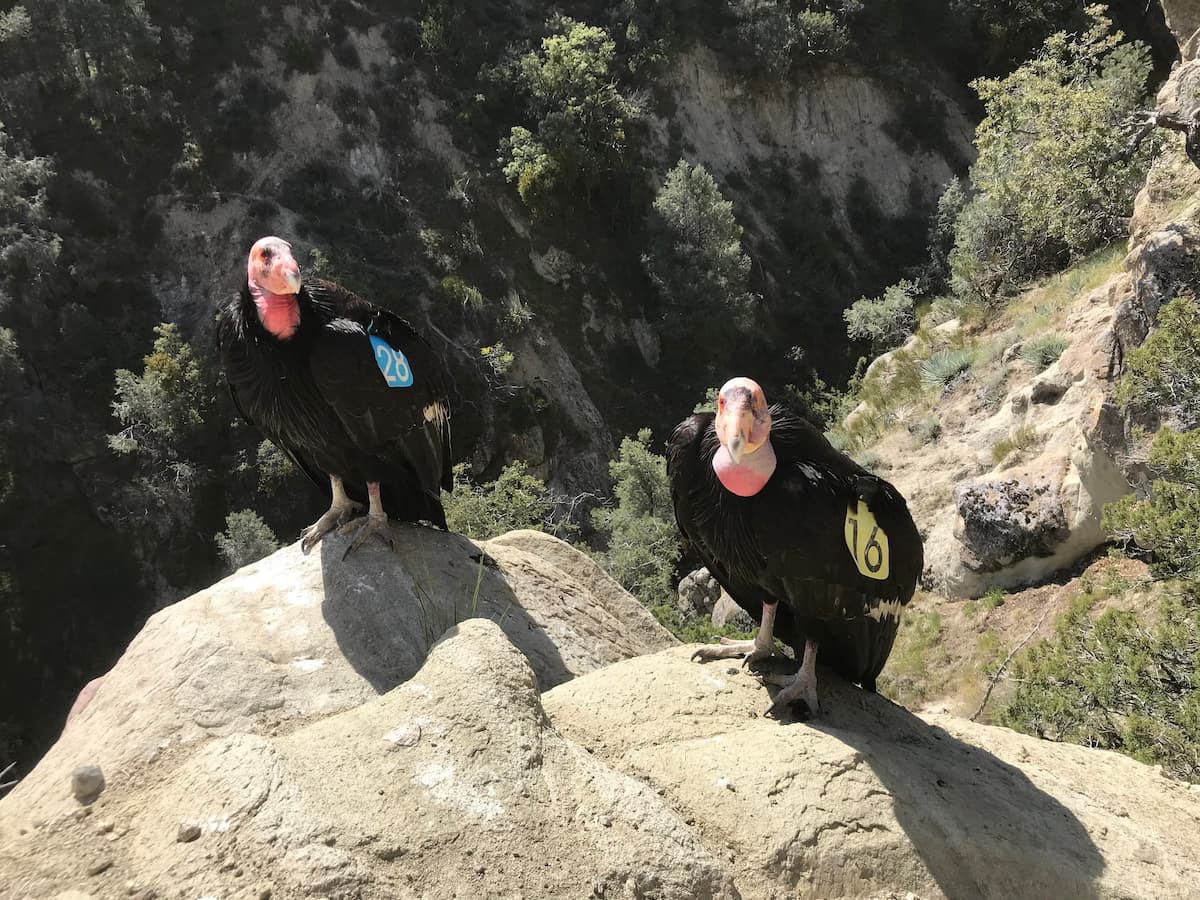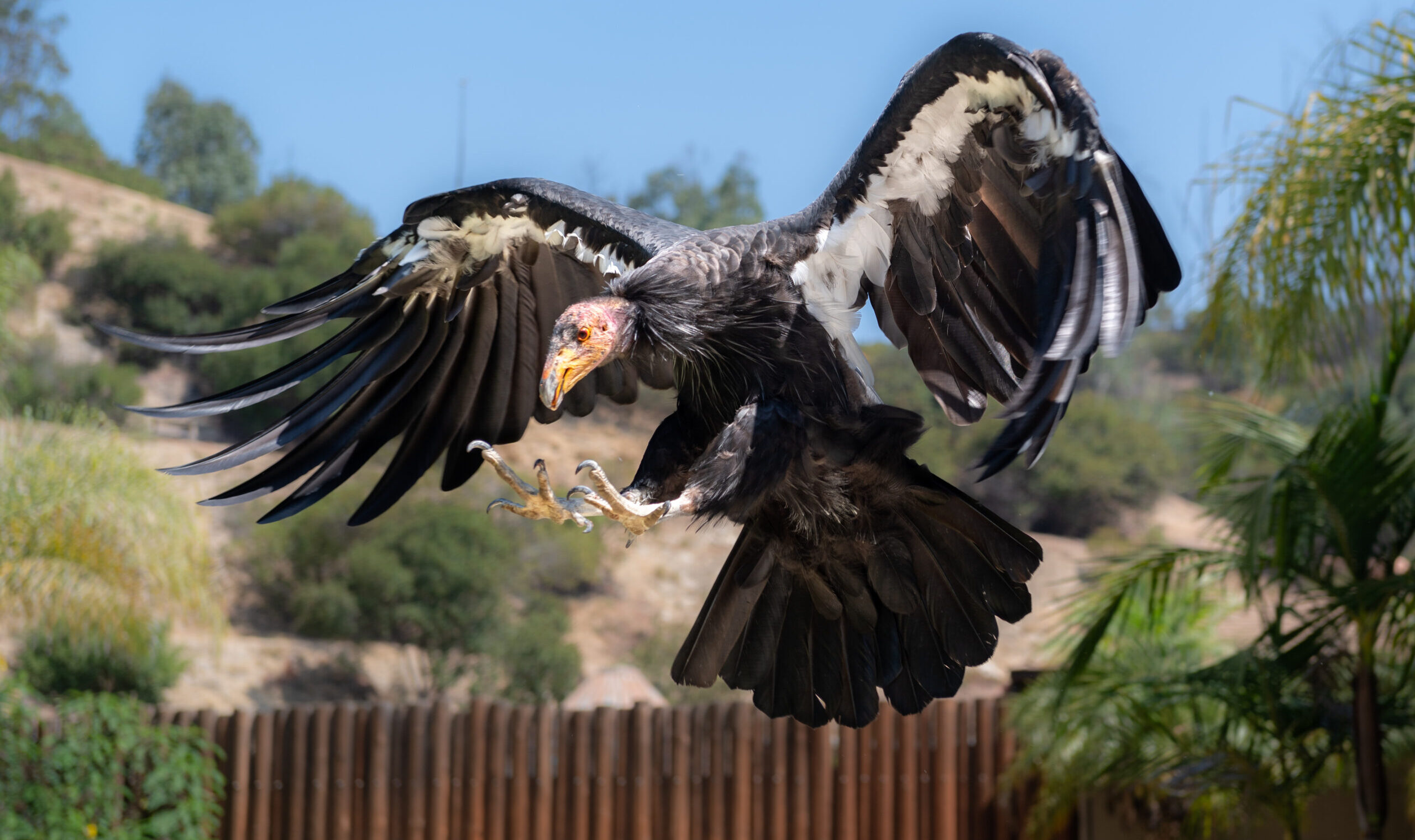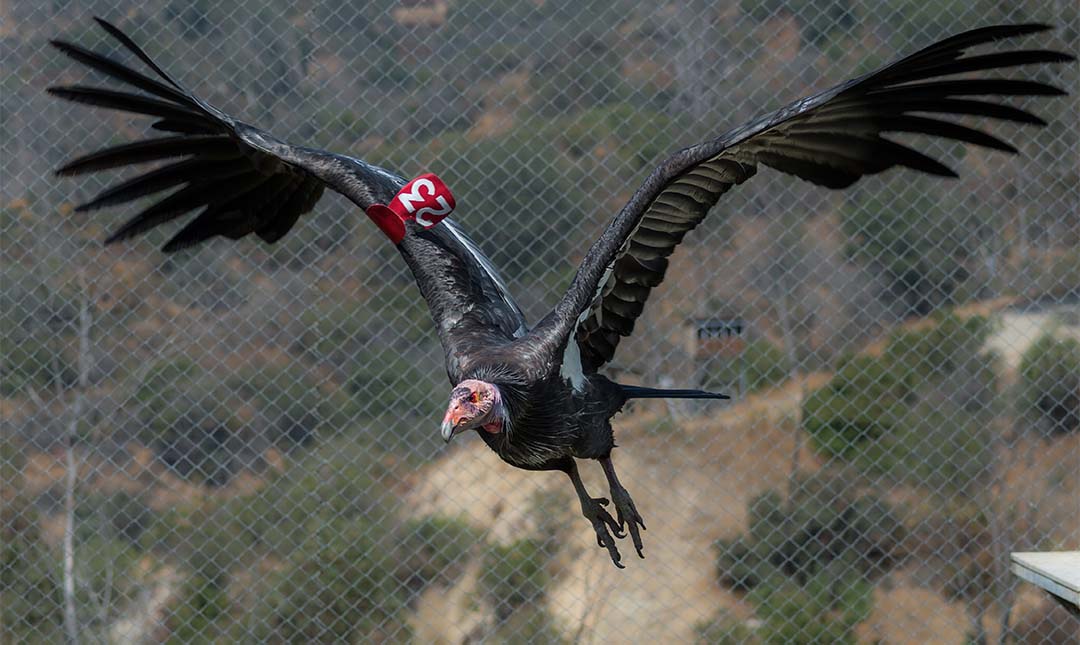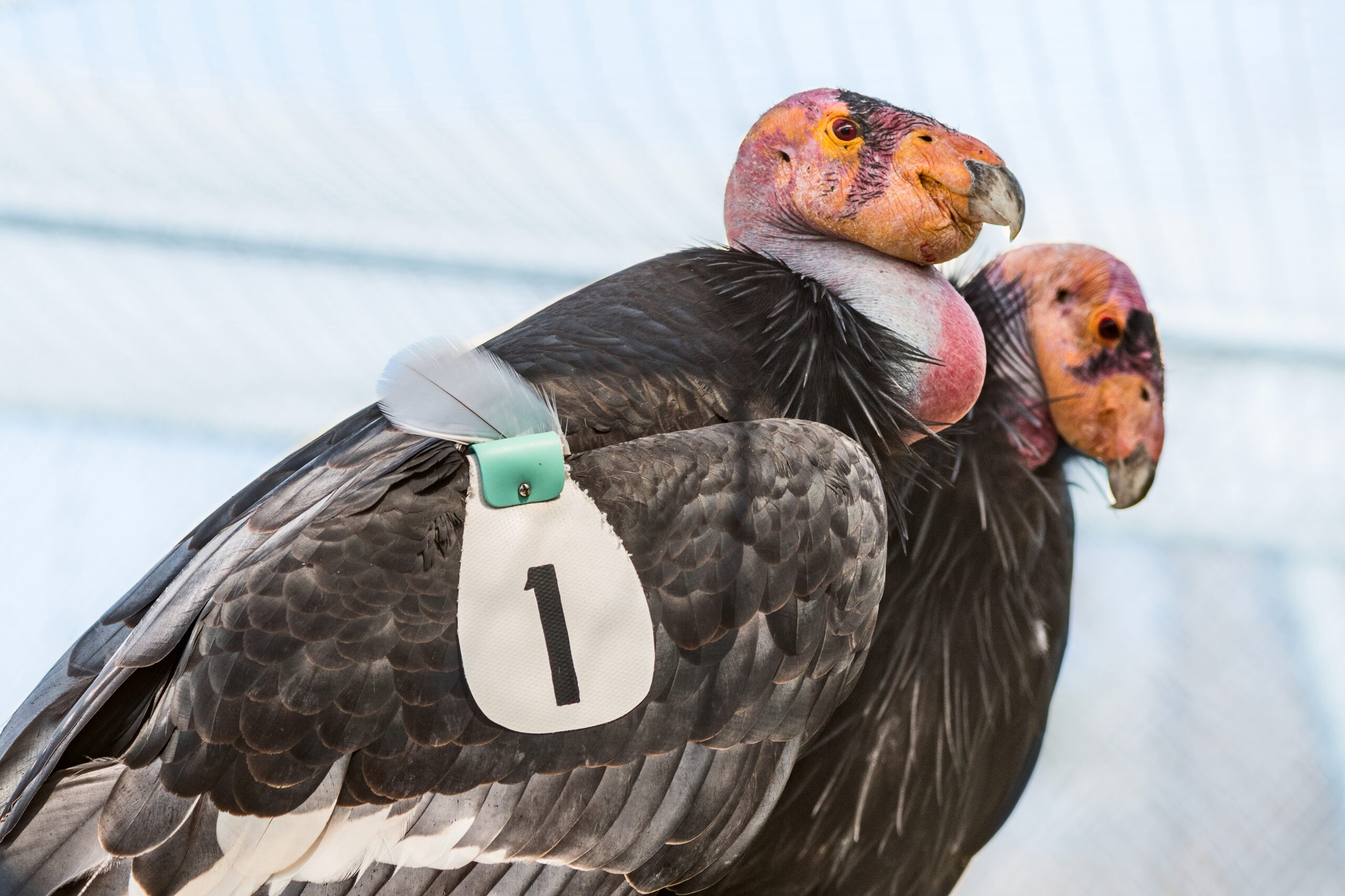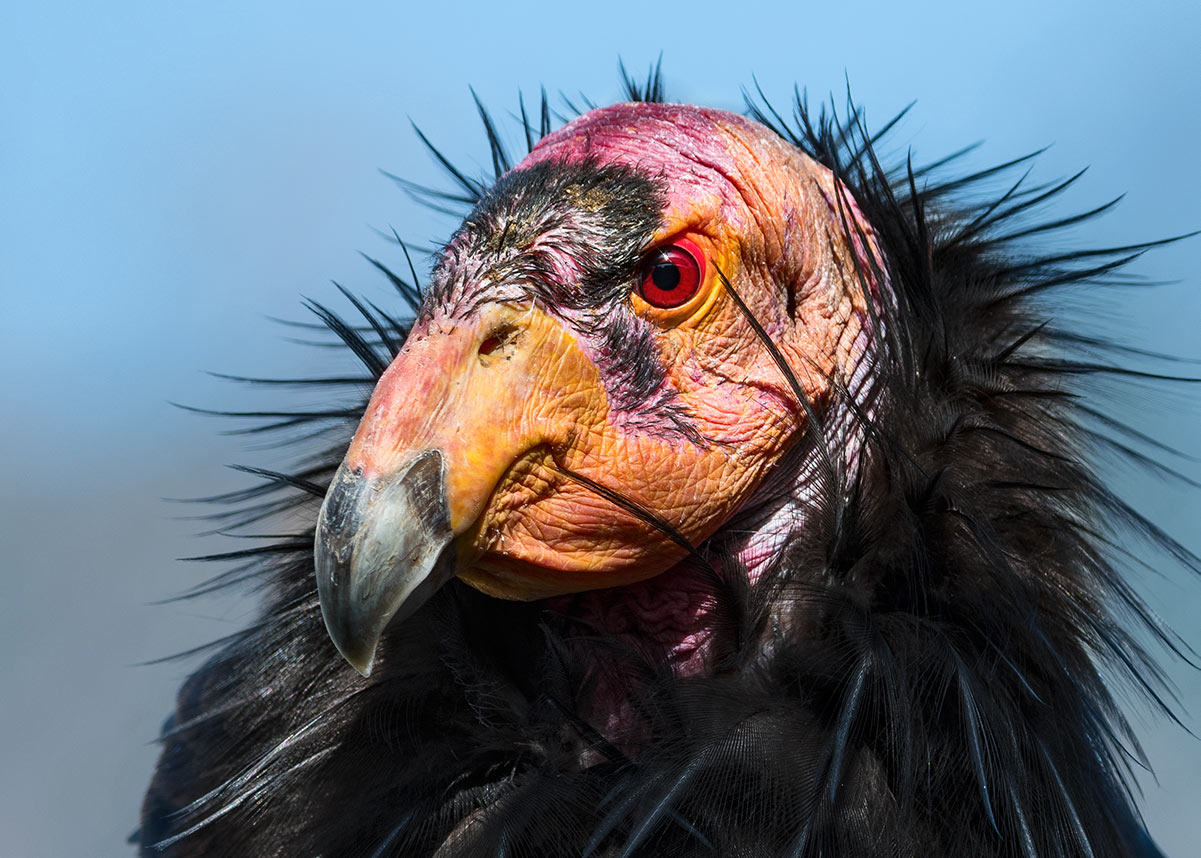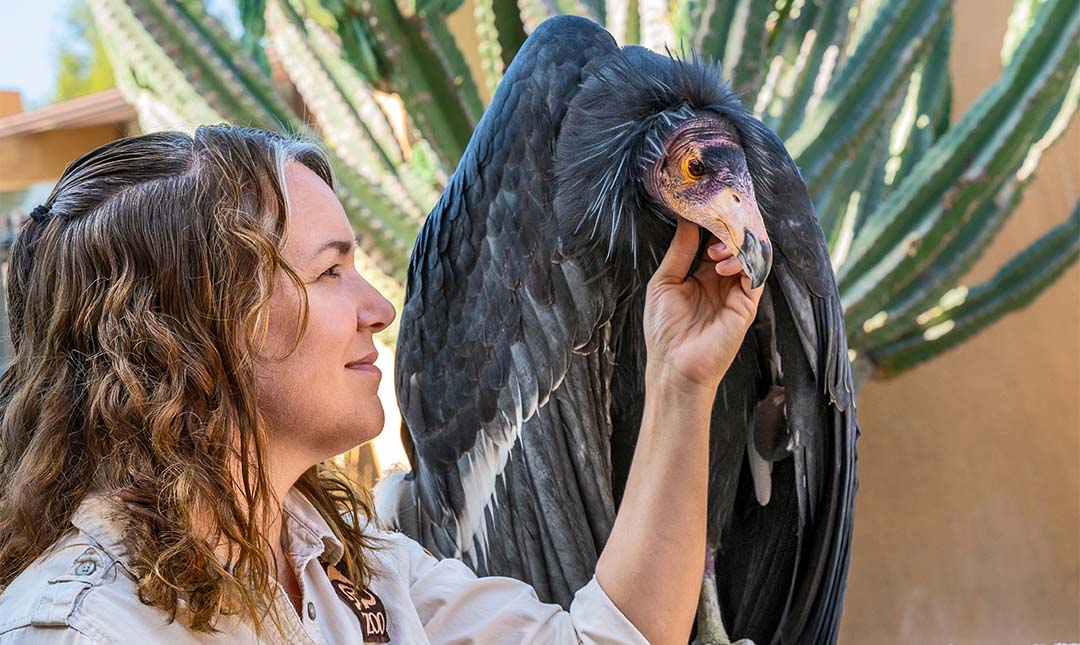About
California condors have soared in the skies of North America for some 11,000 years, since the Pleistocene era. Their range once extended across the southern half of North America and along both the Atlantic and Pacific coasts. With a nine-and-a-half foot wingspan, these ancient birds can fly more than 100 miles each day in search of carcasses to feed on. Condors roost on rocky ledges and in treetops where they can easily launch into the warm air rising in morning thermals. They are highly intelligent, inquisitive, and social birds.
By 1982, the wild population had dwindled to 22 birds. Their decline was due largely to lead poisoning from bullets left in the carrion they consume. In 1987, the last condor was removed from the wild. With a population of just 27 captive birds, the U.S. Fish and Wildlife Service in collaboration with Los Angeles Zoo and the San Diego Zoo began an intensive breeding and reintroduction program that eventually increased the population to more than 500 birds. The release of birds bred in human care into the wild began in 1992, and so far about 300 California condors have been introduced to the wild.

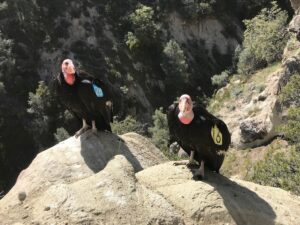
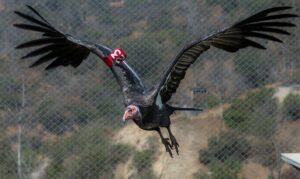
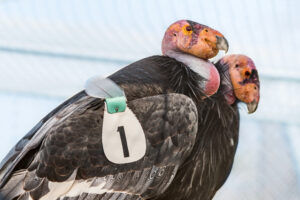

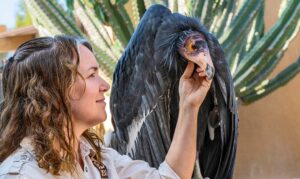
HABITAT
California condors live in the grasslands and chaparral-covered mountains of California, Arizona, and Baja California, Mexico.
DIET
As vultures, condors are carnivorous scavengers, feeding on a variety of carrion from livestock to deer and smaller animals, bison, pronghorn, and marine mammals.
PHYSICAL CHARACTERISTICS
Adult condors measure three to four feet in body length and typically weigh between 17 and 24 pounds. They can live more than 50 years. The oldest bird at the L.A. Zoo, Topatopa, was born in April 1966.
location within the zoo
While California condors are not on exhibit at the Zoo, guests have the opportunity to see Hope, a non-releasable California condor, at the World of Birds Show 12:00 p.m., daily (except Tuesdays), weather permitting.

